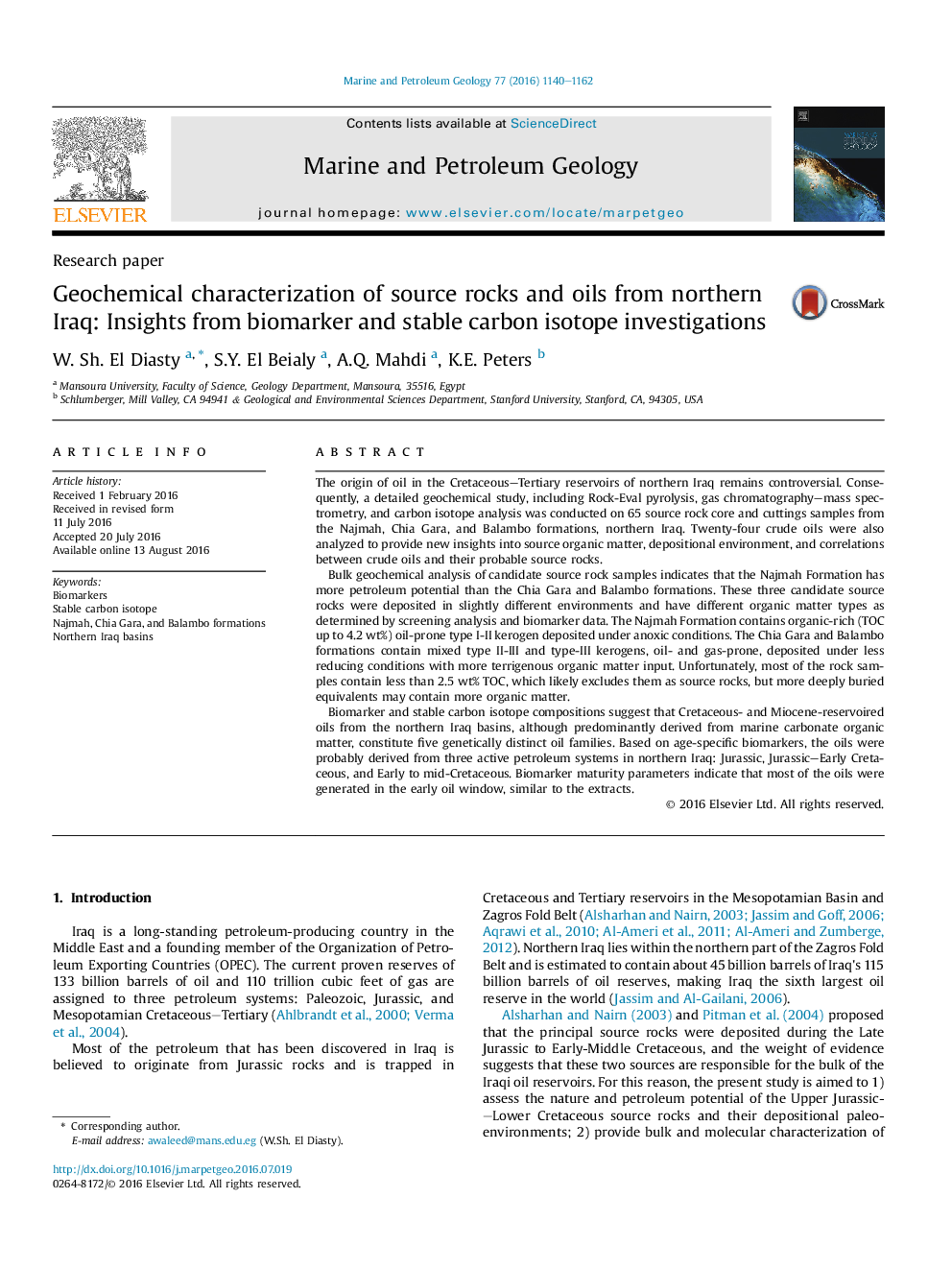| Article ID | Journal | Published Year | Pages | File Type |
|---|---|---|---|---|
| 6434672 | Marine and Petroleum Geology | 2016 | 23 Pages |
â¢Najmah Formation has more petroleum potential than Chia Gara and Balambo formations.â¢The Najmah Formation contains type I-II kerogen deposited under anoxic conditions.â¢Chia Gara and Balambo formations contain mixed OM, deposited under suboxic conditions.â¢Oils from the northern Iraq constitute five genetically distinct oil families.â¢The studied source rock samples are not representative of the effective source rocks.
The origin of oil in the Cretaceous-Tertiary reservoirs of northern Iraq remains controversial. Consequently, a detailed geochemical study, including Rock-Eval pyrolysis, gas chromatography-mass spectrometry, and carbon isotope analysis was conducted on 65 source rock core and cuttings samples from the Najmah, Chia Gara, and Balambo formations, northern Iraq. Twenty-four crude oils were also analyzed to provide new insights into source organic matter, depositional environment, and correlations between crude oils and their probable source rocks.Bulk geochemical analysis of candidate source rock samples indicates that the Najmah Formation has more petroleum potential than the Chia Gara and Balambo formations. These three candidate source rocks were deposited in slightly different environments and have different organic matter types as determined by screening analysis and biomarker data. The Najmah Formation contains organic-rich (TOC up to 4.2Â wt%) oil-prone type I-II kerogen deposited under anoxic conditions. The Chia Gara and Balambo formations contain mixed type II-III and type-III kerogens, oil- and gas-prone, deposited under less reducing conditions with more terrigenous organic matter input. Unfortunately, most of the rock samples contain less than 2.5Â wt% TOC, which likely excludes them as source rocks, but more deeply buried equivalents may contain more organic matter.Biomarker and stable carbon isotope compositions suggest that Cretaceous- and Miocene-reservoired oils from the northern Iraq basins, although predominantly derived from marine carbonate organic matter, constitute five genetically distinct oil families. Based on age-specific biomarkers, the oils were probably derived from three active petroleum systems in northern Iraq: Jurassic, Jurassic-Early Cretaceous, and Early to mid-Cretaceous. Biomarker maturity parameters indicate that most of the oils were generated in the early oil window, similar to the extracts.
